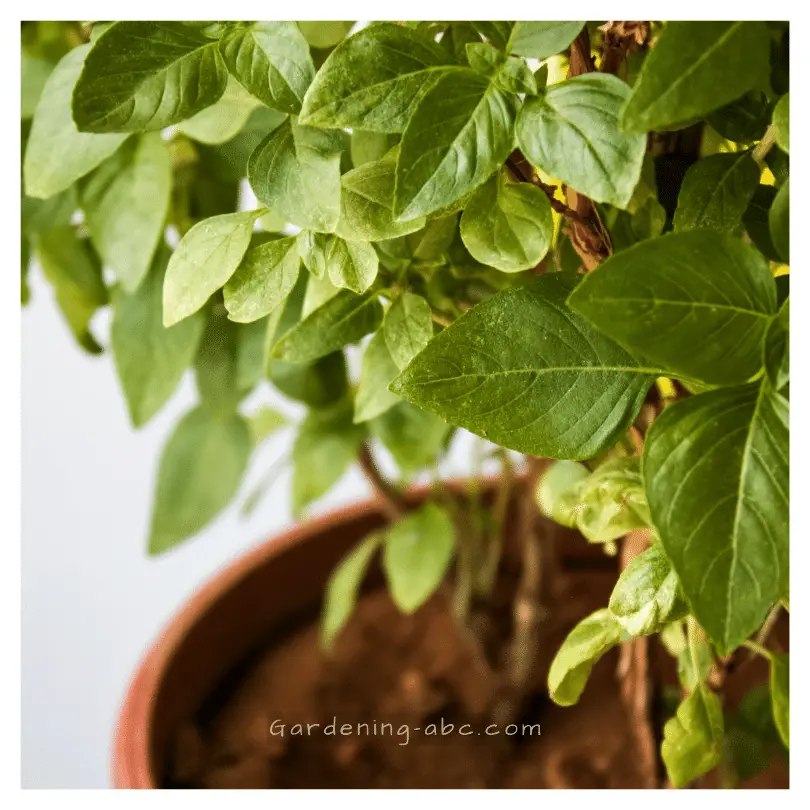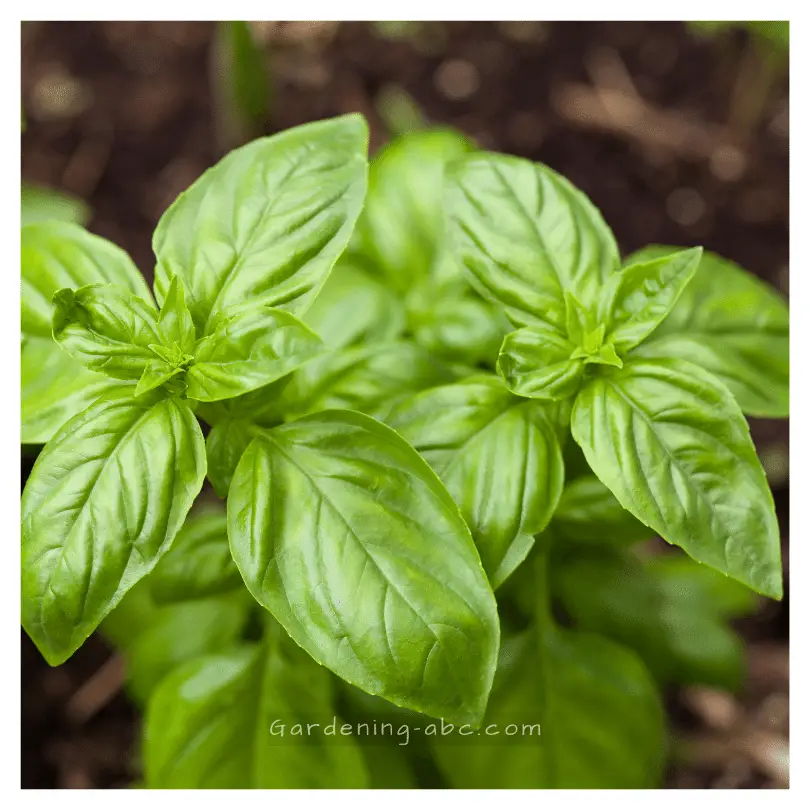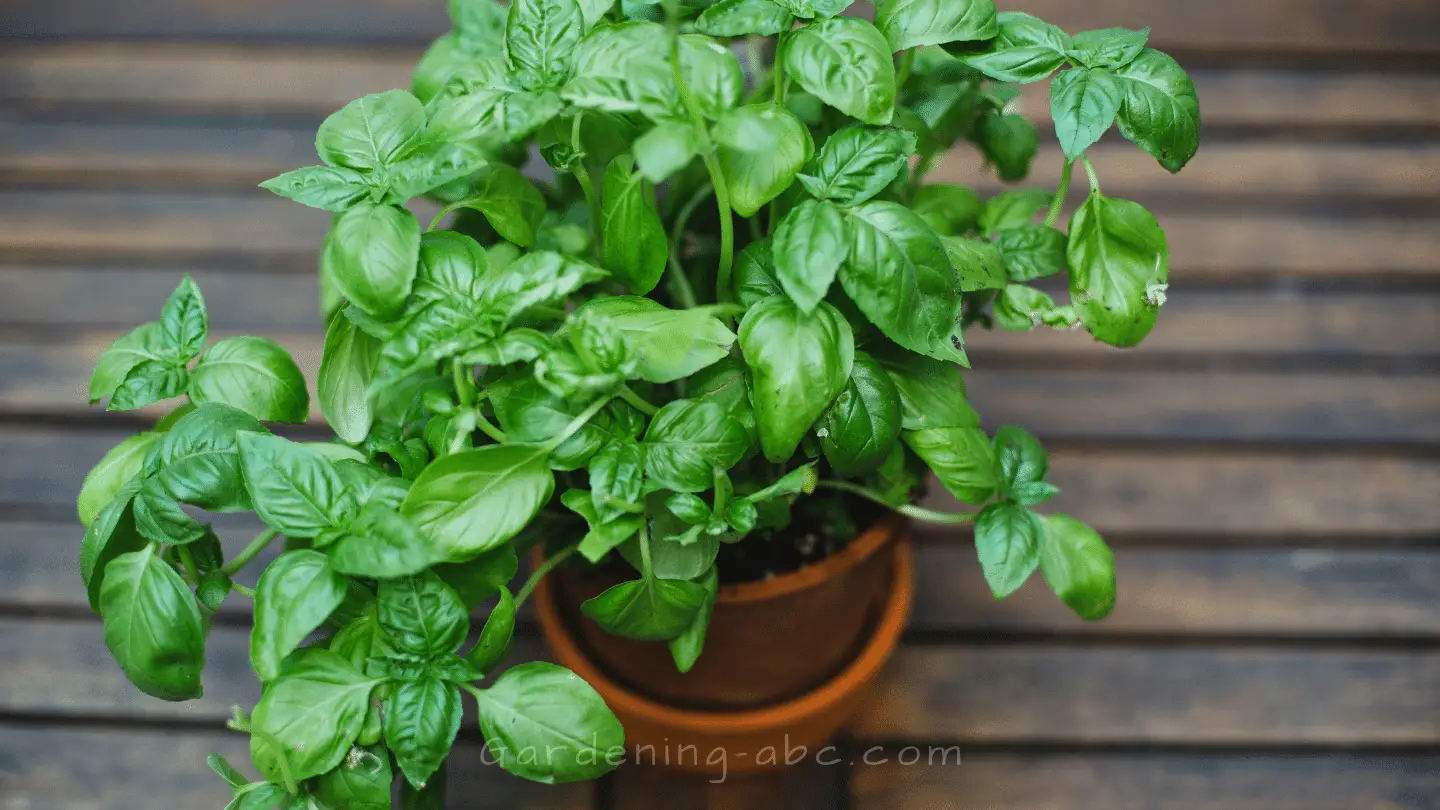We use affiliate links to run our site. When you buy through links on our site, we may earn an affiliate commission, without any added cost to you. Learn more
Basil is a wonderful herb that can add flavor and aroma to your dishes. But did you know that you can grow your own basil at home, even if you are a beginner?
In this article, I will show you how to grow basil from seeds, how to care for your basil plants, and how to harvest and use your fresh basil. Growing basil is easy, fun, and rewarding. Let’s get started!
Table of Contents
Choosing the Right Basil Plant
Before embarking on your basil-growing journey, it’s essential to choose the right basil plant variety. Basil comes in various types, each offering unique flavors and characteristics.
Some popular varieties include Sweet Basil, Genovese Basil, Thai Basil, and Purple Basil. Consider the flavor profiles and growth habits
Optimal Growing Conditions
To ensure healthy growth and abundant harvests, basil plants require specific growing conditions. Here’s what you need to know:
Temperature:
Basil thrives in warm temperatures between 70°F and 90°F (21°C to 32°C). It’s essential to provide adequate warmth, especially during colder months. If planting outdoors, wait until the danger of frost has passed before transplanting.
Sunlight:
Basil plants thrive in full sun, requiring at least six to eight hours of direct sunlight each day. Find a sunny spot in your garden or place your potted basil in a location that receives ample sunlight.
Soil:
Basil prefers well-draining soil with a pH level between 6.0 and 7.5. Prepare the soil by adding organic matter, such as compost or aged manure, to improve its fertility and drainage. If you want to grow basil in containers, use a high-quality potting mix enriched with organic matter.
Containers or Garden Beds:
Basil can be grown both in containers and garden beds. If planting in containers, choose pots with drainage holes to prevent waterlogging. For garden beds, ensure proper spacing between plants to allow for air circulation and growth.
Planting Basil
Now that you have selected the right basil variety and prepared the growing conditions, it’s time to plant your basil. Follow these steps:
Step 1: If planting from seeds, sow them directly into the soil or seed-starting trays. If using seedlings, gently remove them from their nursery containers.
Step 2: Dig a hole slightly larger than the root ball of the basil plant. Place the plant in the hole, ensuring it sits at the same depth it was in the nursery container.
Step 3: Fill the hole with soil and gently press it down to secure the plant. Water the newly planted basil thoroughly to settle the soil around the roots.
Step 4: If planting multiple basil plants, space them 8 to 12 inches apart to allow for proper growth and airflow.
Watering and Irrigation

Proper watering is essential for basil plants to thrive. Follow these guidelines:
Watering Schedule:
Basil prefers consistently moist soil, but avoid overwatering, as it can lead to root rot. Water the plants when the top inch of the soil feels dry to the touch. During hot and dry periods, you may need to water more frequently.
Watering Methods:
Use a watering can or a gentle hose attachment to water the base of the plants, directing the water to the soil rather than the leaves. Avoid wetting the foliage excessively, as it can promote fungal diseases.
Fertilization and Soil Care
To ensure healthy growth and abundant foliage, basil plants benefit from regular fertilization and soil care. Here’s what you need to know:
Organic Fertilizers:
Use organic fertilizers, such as compost, aged manure, or fish emulsion, to nourish your basil plants. Apply the fertilizer according to the package instructions or use a diluted solution for young plants.
Soil pH:
Basil prefers slightly acidic to neutral soil with a pH level between 6.0 and 7.5. Test the soil pH regularly and make adjustments using organic amendments if needed.
Mulching: Apply a layer of organic mulch, such as straw or wood chips, around the base of the plants. Mulching helps retain soil moisture, suppresses weed growth, and moderates soil temperature.
Pruning and Harvesting
Regular pruning not only keeps basil plants compact and bushy but also encourages fresh growth. Here’s how to prune and harvest basil:
Pinching:
Pinch off the top two sets of leaves when the basil plant reaches around 6 to 8 inches in height. This encourages branching and prevents the plant from becoming leggy.
Pinching can be done throughout the growing season whenever the plant becomes too tall or starts to flower.
Harvesting Leaves:
Basil leaves can be harvested once the plant has developed enough foliage. Start by snipping off individual leaves or cutting entire stems just above a leaf node.
This will promote further growth and ensure a continuous supply of fresh basil leaves.
Common Pests and Diseases
While basil plants are generally resistant to many pests and diseases, a few common issues can arise. Here are some preventive measures and organic pest control methods:
Pests:
Common pests that can affect basil plants include aphids, whiteflies, and slugs. To deter them, you can introduce beneficial insects like ladybugs or use organic insecticidal soaps or neem oil sprays. Regularly inspect the plants for any signs of pest infestation.
Diseases:
Basil plants can be susceptible to fungal diseases such as powdery mildew and downy mildew. To prevent these, avoid overhead watering and ensure proper air circulation around the plants.
If needed, treat the affected plants with organic fungicides.

Companion Planting for Basil
Companion planting is an effective way to enhance basil growth and deter pests. Consider planting basil alongside these compatible companions:
| Companion Plant | Benefits for Basil |
|---|---|
| Tomatoes | Enhances flavor |
| Marigolds | Deters pests |
| Asparagus | Attracts beneficial insects |
| Borage | Attracts bees, and other pollinators |
| Cilantro | Repels aphids, spider mites |
| Chamomile, oregano, chives | Deters pests |
| Beets, radishes, turnips, and other root vegetables | Repels pests, enhances flavor |
Preserving Basil
To enjoy the flavors of fresh basil beyond the growing season, you can preserve it using various methods:
Freezing:
Blanch basil leaves in boiling water for a few seconds, then transfer them to ice water. Pat dry and freeze the leaves in airtight containers or freezer bags. Frozen basil can be used in soups, sauces, or pesto.
Drying: Hang basil stems upside down in a dry, well-ventilated area until the leaves are crisp. Strip the leaves from the stems and store them in airtight containers for later use.
Infused Oils: Fill a jar with fresh basil leaves and cover them with olive oil. Let the mixture infuse for a few weeks, then strain out the leaves. The basil-infused oil can be used in salad dressings, marinades, or for drizzling over dishes.
Troubleshooting Common Issues
Sometimes, basil plants may encounter common issues that affect their growth and health. Here are a few troubleshooting tips:
Yellowing Leaves: Yellowing leaves can indicate overwatering, nutrient deficiencies, or pests. Adjust your watering practices, ensure proper fertilization, and inspect the plants for any signs of pests.
Wilting: Wilting can be a sign of underwatering, root rot, or extreme heat. Check the soil moisture levels, improve drainage if necessary, and provide shade during scorching days.
Fungal Diseases: If you notice powdery mildew or downy mildew on your basil plants, remove the affected leaves and ensure proper air circulation. Use organic fungicides if the problem persists.
Basil Varieties for Different Cuisines
Basil varieties offer distinct flavors that are commonly used in specific cuisines. Here are a few popular choices:
Sweet Basil: This is the classic basil variety used in Italian cuisine, perfect for pasta dishes, pesto, and Caprese salads.
Thai Basil: Thai basil has a spicy, anise flavor and is commonly used in Thai, Vietnamese, and other Southeast Asian cuisines. It pairs well with stir-fries, curries, and noodle dishes.
Genovese Basil: Genovese basil is known for its strong aroma and is the primary basil used in traditional Italian pesto sauce. It also adds a delightful flavor to pizzas, salads, and sandwiches.
Lemon Basil: With its citrusy fragrance, lemon basil adds a refreshing twist to salads, seafood dishes, and desserts. It pairs well with lemon-based recipes and summer beverages.
Purple Basil: Purple basil not only adds visual interest to dishes but also has a slightly spicy flavor. It can be used as a garnish or added to salads, sauces, and infused oils.
Basil in Herbal Remedies
Apart from its culinary uses, basil has been used for its medicinal properties in traditional herbal remedies. Here are a few ways basil can be incorporated into herbal treatments:
Digestive Aid: Basil leaves can be brewed into a tea to aid digestion, relieve bloating, and soothe stomach discomfort.
Respiratory Support: Basil’s aromatic compounds can help ease respiratory issues. Inhaling steam from basil-infused water may provide relief from congestion and coughs.
Stress Relief: Basil is known for its calming properties. Basil tea or incorporating fresh basil leaves in aromatherapy practices can help reduce stress and promote relaxation.
Growing Basil Indoors
Even if you don’t have a garden, you can still enjoy fresh basil by growing it indoors. Here are a few tips for successful indoor basil cultivation:
Lighting: Place your potted basil in a sunny window that receives at least six hours of direct sunlight each day. If natural light is limited, consider using fluorescent or LED grow lights to supplement.
Temperature and Humidity: Basil thrives in temperatures between 70°F and 85°F (21°C to 29°C). Maintain a moderate humidity level around the plant by misting the leaves occasionally or using a humidifier like this.
Watering: Indoor basil may require more frequent watering as the soil dries out faster indoors. Check the moisture level regularly and water when the top inch of soil feels dry.
Conclusion
Basil plant care is essential for cultivating healthy and flavorful plants. By selecting the right basil variety, providing optimal growing conditions, and practicing proper watering, fertilization, and pruning techniques, you can enjoy a bountiful harvest of aromatic basil leaves.
Whether you use them in culinary creations or explore their medicinal properties, growing basil at home is a rewarding experience that adds freshness and vibrancy to your life.
So why wait? Get started with your basil plant care journey and savor the joy of growing and using this versatile herb in your everyday life.
Frequently Asked Questions(FAQs):
Can I grow basil indoors year-round?
Yes, you can grow basil indoors year-round as long as you provide adequate light, warmth, and proper care.
How often should I fertilize my basil plants?
It’s recommended to fertilize basil plants every 4-6 weeks during the growing season using organic fertilizers.
Can I grow basil from cuttings?
Yes, basil can be propagated from cuttings. Simply take a 4-6 inch cutting from a healthy basil plant, remove the lower leaves, and place it in water or moist soil until roots develop.
What are some culinary uses for basil beyond Italian dishes?
Basil is versatile and can be used in various cuisines. It adds flavor to Thai curries, Vietnamese pho, Greek salads, and even fruit desserts.
Amazon and the Amazon logo are trademarks of Amazon.com, Inc, or its affiliates.

Hi there! My name is Prasenjit and I’m an avid gardener and someone who has grown a passion for growing plants. From my hands-on experience, I have learned what works and what doesn’t. Here I share everything I have learned.
